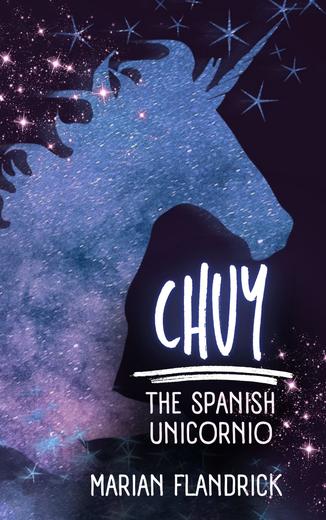
Age:
Middle School
Reading Level: 4.8
Chapter One
My eighth-grade science teacher, Mr. Reyes, asked me to bring Chuy to school. It would be a kind of day-long science project for his classes.
I said sure, mostly because that meant I would miss all of my classes to stay with Chuy.
Wicked, that.
Chuy can be kind of, well... unpredictable. But I'm training him and he's slowly getting better. So after talking with my grandfather, I agreed.
Albuquerque, where I live, is the biggest city in New Mexico. At its corazón, its heart, it is still very agricultural. Along the Rio Grande River that runs through the city there are alfalfa fields and pastures. Most people in the South Valley, where I live, have some chickens and a goat or two scratching and grazing around their double-wide trailer or adobe house.
My family wasn't any different. We had hens and a stupid rooster who crowed in the middle of the night. I could never figure out his problem. Was he having nightmares, or what?
Like a lot of families, we had goats to roast at family matanzas — barbecues — and a couple of horses.
And — I guess this is kind of unusual — we also had a real, true, Spanish unicornio.
Really. A unicorn.
He's silvery grey, the color of sage, which gave him and his wild cousins good camouflage in the high desert. My abuelo, my grandfather, lives about fifty miles from us on the Laguna Pueblo Reservation. He caught him in the wild.
Though Chuy is a unicorn, he's not what most people think of when they think of unicorns. In scientific terms, Chuy and his kin are in the family equidae and the genus equus. But where most horses are equus caballus, Chuy is equus unicornio novus Hispania. A New Spain — or really, a New Mexico — unicorn.
And he is very horse-like. Except, of course, for the horn. He's small, like a pony. But Chuy is still young, so he isn't at his full height yet.
Spanish unicorns only get about eight or nine hands high. A hand is four inches. There is evidence of larger unicorns in the Sahara Desert and in Mongolia, at least according to the skeleton pieces scientists have found.
Chapter Two
That morning, getting ready for school, I thought I had put all my stuff in one place. But, of course, I hadn't.
"Where's Chuy's halter?" I called from the back porch.
I was sorting through currycombs, a horn debudder for goats, bits of leather straps off bridles, and leather strings from saddle rigging. It was already after seven, and I had to get going so I wouldn't be late to school.
My middle school was really strict and you got busted big time for being late. The school had metal scanners, campus police, and sometimes drug dogs. Even though South Valley was semi-rural, it was also bursting with gangs and wannabe gangsters.
Mamá was in the next room getting breakfast together: homemade tortillas stuffed with scrambled eggs, fried potatoes, and homemade salsa. Total yum.
"Abril," she called back, "didn't you put it in your backpack last night, so you'd have it this morning?"
"Oh. That's right," I said.
I ran back into the living room and yanked the halter out of my backpack. I guess I was more organized than I thought.
My youngest brother, Felipe, was jumping up and down on the couch. He was shouting along with — who else? — Dora the Explorer.
Halter in hand, I ran out the back door.
Chuy was finishing his breakfast alongside two goats, all of them munching alfalfa hay off the ground. Papá had fed them before he left for work at his construction yard.
Albuquerque was redoing some of the freeway overpasses. Papá's company was making the huge, interlocking cement blocks that held up the road. We kids always pointed and cheered when we drove by the overpasses he'd helped to build.
When I haltered Chuy, I realized he had a big, muddy, green spot on his hip.
"Ay, you cerdo!" I told him. "You were clean last night, but now everyone will think you are a pig!"
Chapter Three
Chuy just lifted his head, his horn glimmering silvery grey. Then he dipped his face back to the hay.
He wasn't much bigger than a Great Dane dog. He'd get a little taller and probably fill out more in the next year or so, but not a lot. We didn't geld him, because my abuelo wanted to try breeding Spanish unicorns in captivity. He was working on catching more wild unicorn mares. He had a couple of them already.
With the Indians' permission, Abuelo caught wild unicorns on the Laguna and Acoma Pueblos. Spanish unicorns were protected in the state and federal forests, but the Indians could do what they liked with the unicorns on their land.
In Keres, the Laguna and Acoma language, they called them "hell monsters." That seemed kind of extreme, except, well... they could be hell monsters. The unicorns sometimes fought like those people who did sport fencing. You know, with those skinny blades.
I brushed out the green, damp spot on his backside as best as I could. So what if he was a green-spotted unicornio?
I ran back into the house and grabbed a breakfast tortilla. Then I hollered, "I'm going!"
Mamá was saying, "You need to eat more, mija."
"Don't have time," I said. I kept going.
Chuy was still munching his breakfast, but I grabbed the lead rope and pulled.
"Come on!" I said.
He braced his legs and flattened his ears against his skull. Then he parried and slashed at me.